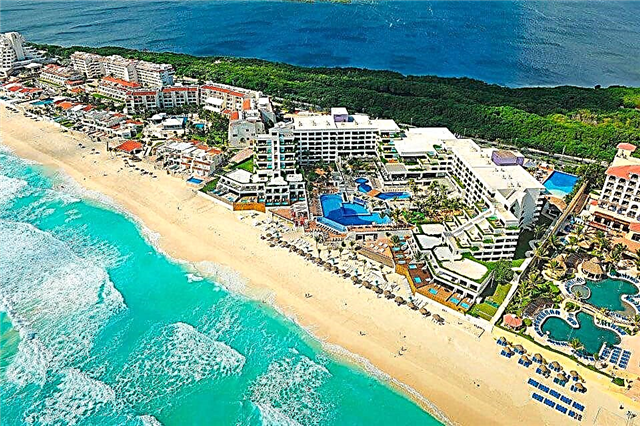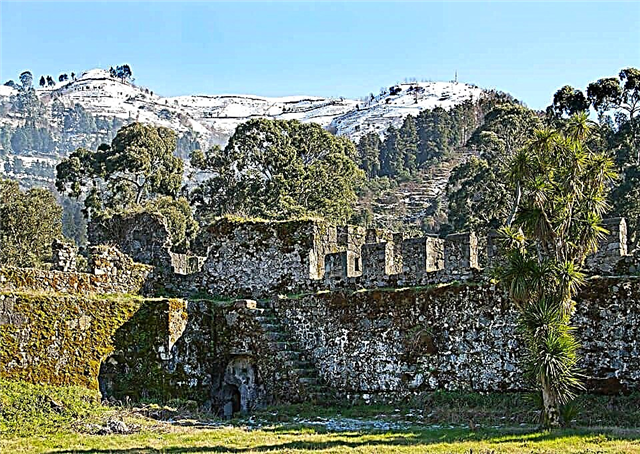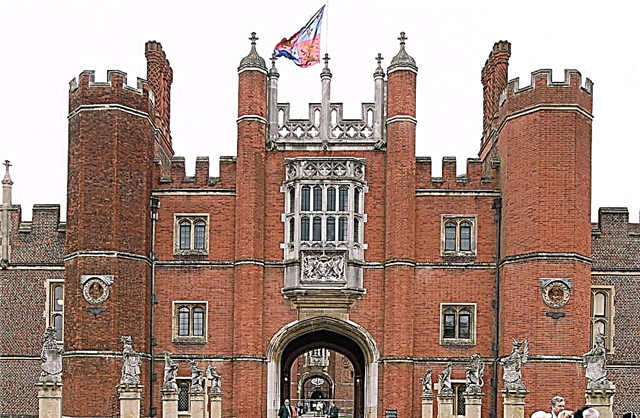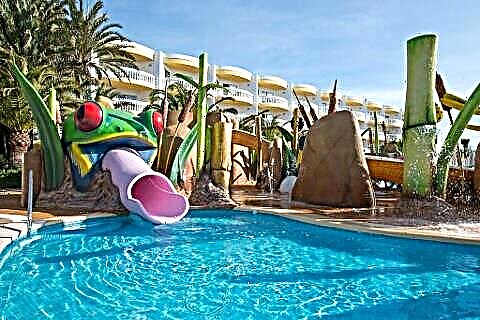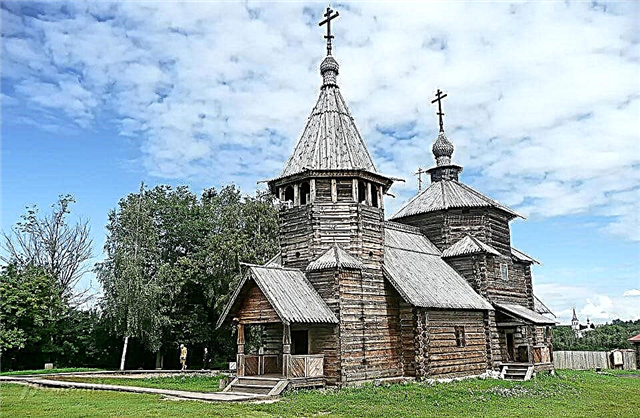Suzdal is one of the main pillars of the Golden Ring of Russia. This is a huge open-air museum. There is a unique combination of natural beauty and ancient Russian architecture dating back to different periods.
Suzdal is a revived epic with white-stone cathedrals, Kremlin walls and golden domes. At the moment, there are thirty-two churches in the city, many of which are of a rather venerable age, as well as more than one hundred and fifty architectural monuments made in various styles.
There are no large enterprises, highways or other consequences of civilizational progress - instead, the authenticity of old Russian settlements, which managed to preserve the uniqueness of their appearance. Not surprisingly, many local attractions are protected by international organizations.
The tourist popularity of Suzdal never wanes, but, unfortunately, not all guests of the city have enough time to fully get to know all its beauties, and the question of what can be seen in Suzdal in 1 day remains relevant.
Vasilievskaya street and Vasilievsky monastery

Vasilievsky Monastery seems cold and ascetic. A similar impression appears due to the fact that, with a relatively large size, the monastery has extremely narrow embrasure windows, low portals and a rather restrained design. These features make it look like an old fortress.
This architectural monument is rather unusual from the point of view of its construction - it has two pillars. Over its more than four hundred years of history, it has been rebuilt more than once. The last on the territory of the monastery was the bell tower, which is decorated with pilasters and carved cornices.
Compared to other buildings, it is quite brightly decorated. The founding of the monastery is associated with the name of Vladimir the Great.
It is the Vasilievsky Monastery that is a kind of starting point - that part of Vasilievskaya Street begins here, which has retained some authenticity. Local houses are built of wood with all the elements typical of ancient architecture.
The carved platbands stand out especially, by which you can determine the time of construction of a particular house.
Museum of Wooden Architecture

This complex is a unique architectural nursery of the 17-19 centuries. All the buildings that are located today on its territory - the huts of ordinary peasants, large houses of merchants and landowners, several churches, mills, barns, wells sheds - all this was brought from various parts of the Suzdal region.
Historical buildings that needed reconstruction were dismantled and rebuilt, but already as part of the museum. It is worth noting that not only the external attributes of the corresponding centuries have been preserved, but also the elements of everyday life and the interior design of all rooms have been carefully restored.
Today, folk festivals in the old Russian flavor are often held on the territory of the museum, for example, Maslenitsa is celebrated.
Shopping arcade and eternal flame

The shopping arcade is an atmospheric place in the historical sense. They are located on a cobblestone square. An old church rises above the square. The project of the square was developed and implemented at the beginning of the nineteenth century according to the sketches of the architect A. Vershinsky.
It was assumed that the shops of merchants from all over the Russian Empire would be located here. However, expectations were more than justified - the shopping arcade was never empty. Today, the original function of the Shopping Rows has been preserved - a kind of sketch in stone on the theme of a provincial town of the nineteenth century.
They sell here mainly various hand-made souvenirs, as well as such attributes of visiting Suzdal as mead and kvass. There is a park directly opposite the Trade Rows, where the Eternal Flame is burning today.
Water tower

The water tower of Suzdal is a landmark, which, unfortunately, has retained its historical and architectural significance only from the outside. The interiors belong to the boutique and will not be of interest to fans of pre-revolutionary architecture.
The exact date of the tower's construction is not known. It is believed that this happened at the beginning of the twentieth century. The tower consists of four tiers, and the upper one is framed by a balcony, which rests on wooden consoles.
The roof is made in a hipped roof style, which is more typical for religious buildings. The structure is crowned with a lightning rod. In the plans, the tower was erected to provide water to the neighboring hospital building, which today also has not retained its original functions.
However, just five decades ago, both the water tower and the hospital worked successfully.
Bishops' chambers

The bishop's court is an important component of the Suzdal Kremlin. The construction of this complex proceeded rather slowly - from the fifteenth to the eighteenth century. However, from the very beginning, the chambers became the place of direct residence of the local spiritual ruler.
The appearance of the Bishops' Court has changed more than once. The most notable changes occurred during the most active period of Metropolitan Hilarion, a prominent historical figure, who actually created a new complex, complicating it in architectural and structural terms.
The complex includes a number of residential buildings and churches that were built at different times.
Elements from natural oak, arched floors, tiled tents, scarlet cloth - all this is intricately intertwined in the design of the Bishops' Chambers.
At the moment, this complex is one of the components of the museum. It is used as an exhibition hall where one can get acquainted with the art of icon painting. Here are collected exhibits, whose age is more than three hundred years. The museum is especially proud of the works of Simon Ushakov stored here.
Theotokos-Nativity Cathedral

This cathedral is the oldest stone building in Suzdal. It is part of the complex of the Suzdal Kremlin and is perhaps its main dominant.
The graceful snow-white building with blue domes crowning five chapters stands out among the other buildings of this complex. The white-stone cathedral was built over many centuries, undergoing drastic changes.
Its history is closely connected with such iconic people of its time as Vladimir Monomakh, Yuri Dolgoruky, Yuri Vsevolodovich and others. Today the remains of many Russian princes are kept here.
There are various elements in the decor of the Nativity Cathedral, for example, the murals on the southern doors dedicated to the deeds of angels clearly belong to the Byzantine school of icon painting, but in the external appearance of the sculptural elements, for example, lions, the influence of the Romanesque style can be traced.
The decoration contains elements of gilding and precious metals.
The complex of churches of the Entry into Jerusalem parish

The first mentions of this complex date back to the seventeenth century. At the moment, it includes two churches: the Church of St. Nicholas the Wonderworker and the Church of the Lord's Entry into Jerusalem. Both temples were built in the first decade of the eighteenth century and are similar in many ways.
The buildings are completely typical for the Suzdal architecture format, but, nevertheless, they fit perfectly into the city-wide panorama. Both churches are summer churches and were erected on the site of old temples, the reconstruction of which would require an even greater investment.
Monastery of the Robe

The construction of this temple dates back to the middle of the sixteenth century. It can hardly be called a typical building of its time for a number of reasons. By itself, the three-domed cathedral with three apses is an unusual phenomenon if we talk about the Suzdal type of architecture. The cathedral is classified as a stopless type of structure.
There are no internal supports, which is why the chapters crowning the cathedral had to be lightened at the expense of thinning. The interior of the Cathedral of the Robe does not correspond to its external outlines, since the zakomaras and shoulder blades that adorn the side facades are false.
The interior design is based mainly on skillful work with tiled inserts, patterned spraying and stone carving. Throughout its history, the cathedral has not experienced any particularly serious restructuring, but during the Soviet Union, the temple was badly damaged and was closed.
At the moment, restoration work has already been completed, the plundered wealth of the cathedral, albeit not in full, but returned to its ownership.
Posad house

This architectural monument is unique without understatement. It was erected around the end of the seventeenth century, when there was a transition to the use of not wood, but stone as the main material for construction. It also became the first "hybrid" structure of the new formation.
In its form, it repeats the wooden houses of that time, however, it is a building made of stone. Initially, the house was covered with planks and rather modestly decorated - mostly with fine carvings.
Windows with antique frames are of particular interest. Today the house is used as an interactive museum - the supposed atmosphere in which the trading townspeople of Suzdal lived has been restored.
At the moment, it is not known exactly who the real owner of the house was. According to the most popular versions, he could be a fairly wealthy clergyman, a tavern or a kalachnik.
Simeonovskaya and Smolensk churches

Not far from the Posad house is the Simeon Church. It was erected in the second third of the eighteenth century in a manner typical of Suzdal craftsmen. A low-rise building with light walls and a blue roof, this church has been rebuilt several times.
The church also includes a bell tower, which was built almost a century after the completion of work on the church itself. The dominant style in the appearance of the bell tower is classicism. The adjacent Smolensk Church belongs to an earlier time of construction.
It is in no way connected with the city of Smolensk, but was named after the icon of the Smolensk Mother of God. It is noteworthy that by the seventeenth century, in which the construction of the church fell, the five domes as a phenomenon had practically disappeared, nevertheless, in the appearance of the Smolensk church we see exactly five chapters.
The church is devoid of heavy monumentality - on the contrary, it is full of lightness and grace.
Monastery of Saint Euthymius

This monastery is located on the banks of the Kamenka and was included in the UNESCO World Heritage List as a unique architectural monument. The monastery was founded in the middle of the fourteenth century.
Unfortunately, the first buildings have not survived. We have survived only those structures that relate mainly to the sixteenth century. The monastery complex includes a number of churches, living quarters, buildings and even a Prison yard.
In Suzdal, GuruTurizma recommends the following hotels:


